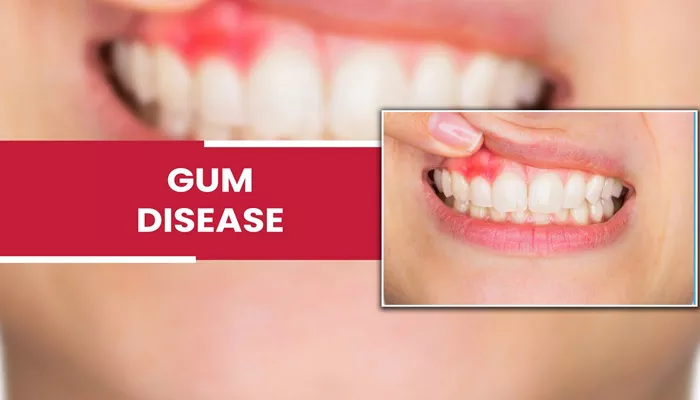Periodontitis, often referred to as advanced gum disease, is a serious dental condition that affects the gums and the bones supporting the teeth. It is a progressive disease that can lead to tooth loss and has been linked to various systemic health issues. Understanding periodontitis is essential for prevention, early detection, and effective treatment.
What Is Periodontitis?
Periodontitis is an inflammatory disease caused by the accumulation of plaque, a sticky film of bacteria that forms on teeth.
If left untreated, this condition can progress from gingivitis, a milder form of gum disease characterized by inflammation and bleeding of the gums, to periodontitis. In periodontitis, the inflammation extends deeper into the supporting structures of the teeth, including the bone.
The disease typically develops in stages, beginning with gingivitis and advancing to more severe forms if not managed properly. Periodontitis can result in significant damage to the soft tissue and bone that support the teeth, leading to tooth mobility and eventual loss.
Causes of Periodontitis
The primary cause of periodontitis is poor oral hygiene that leads to plaque buildup on teeth. When plaque is not removed through regular brushing and flossing, it hardens into tartar (calculus), which can only be removed by a dental professional.
Tartar traps bacteria and irritates the gums, causing inflammation.
Several factors can contribute to the development of periodontitis:
Genetics: Some individuals may be genetically predisposed to gum disease.
Smoking: Tobacco use significantly increases the risk of developing periodontitis.
Hormonal Changes: Hormonal fluctuations during puberty, menstruation, pregnancy, or menopause can make gums more sensitive and susceptible to inflammation.
Chronic Diseases: Conditions like diabetes can affect blood flow and immune response, increasing susceptibility to infection.
Medications: Certain medications can reduce saliva flow or cause gum overgrowth, both of which can contribute to gum disease.
Poor Nutrition: A diet low in essential nutrients can impair immune function and overall health.
Symptoms of Periodontitis
Recognizing the symptoms of periodontitis is crucial for early intervention. Common signs include:
Bleeding Gums: Gums may bleed during brushing or flossing.
Swollen Gums: Inflammation causes gums to appear red and swollen.
Receding Gums: Gums may pull away from teeth, creating pockets.
Bad Breath: Persistent bad breath or a bad taste in the mouth may occur due to bacterial infection.
Loose Teeth: As bone support diminishes, teeth may become loose or shift position.
Pus Between Teeth: Pockets formed between gums and teeth may fill with pus.
Pain When Chewing: Discomfort or pain while chewing food may develop.
Diagnosis of Periodontitis
A dentist typically diagnoses periodontitis during a routine dental examination. The diagnostic process includes:
Medical History Review: The dentist will ask about symptoms and medical history.
Clinical Examination: The dentist examines the gums for signs of inflammation, bleeding, and recession.
Periodontal Probing: A small instrument called a periodontal probe measures pocket depths around each tooth. Deeper pockets indicate more severe disease.
Dental X-rays: X-rays help visualize bone loss around teeth and assess the extent of periodontal damage.
Treatment Options for Periodontitis
Treating periodontitis requires a comprehensive approach tailored to the severity of the disease:
Non-Surgical Treatments
Scaling and Root Planing (SRP): This deep cleaning procedure removes plaque and tartar from below the gum line. It smooths root surfaces to promote healing.
Antibiotics: Topical or oral antibiotics may be prescribed to help control bacterial infection.
Improved Oral Hygiene Practices: Patients are educated on proper brushing techniques and encouraged to floss daily.
Surgical Treatments
If non-surgical treatments are insufficient, surgical options may be necessary:
Flap Surgery (Pocket Reduction Surgery): The dentist lifts back the gums to remove tartar deposits deep under the gum line.
The gums are then sutured back into place for tighter fit around teeth.
Bone Grafts: This procedure involves using natural or synthetic bone material to regenerate lost bone structure around teeth.
Guided Tissue Regeneration (GTR): A special membrane is placed between bone and gum tissue to promote healing and regeneration of lost tissues.
Soft Tissue Grafts: Tissue from another area in the mouth is used to cover exposed roots or build up gum tissue.
Preventing Periodontitis
Preventive care is key in avoiding periodontitis:
Regular Dental Checkups: Routine visits allow for early detection and treatment of gum disease.
Daily Oral Hygiene Practices:
Brush teeth at least twice daily with fluoride toothpaste.
Floss daily to remove plaque between teeth where toothbrushes cannot reach.
Healthy Lifestyle Choices:
Avoid smoking or using tobacco products.
Maintain a balanced diet rich in vitamins and minerals that support oral health.
Manage Chronic Conditions: Control conditions like diabetes that increase risk for periodontal disease through medication and lifestyle adjustments.
Conclusion
Periodontitis is a serious condition that requires prompt attention and treatment. Understanding its causes, symptoms, stages, diagnosis, treatment options, prevention methods, and overall health implications is crucial for maintaining good oral health. Regular dental visits combined with diligent oral hygiene practices can help prevent this debilitating disease from developing or progressing.
Related topics:

